Many legumes have seeds, called peas or beans, that are lucky. There are also pasture and tree legumes whose leaves and seeds are carried for luck. There is quite a lot of magick and lore surrounding these little packages of energy.
- Ruler: Mercury
- Type: Vegetable, seed
- Magickal form: dried, raw, cooked
Use beans to appease the spirits of the dead. Throw some around the outside of the home if a ghost or poltergeist is bothering you. Beans inspire creativity and communication and can be carried raw in a pouch or cooked and eaten for inspiration.
Here is a list of the different types of beans and their specific properties:
- Black turtle beans help to jump hurdles and make important decisions.
- Butter beans reduce stress.
- Canary beans bring happiness and success in the arts.
- Cow or black-eyed peas bring luck and increase psychic vision.
- Cranberry (October) beans attract new opportunities.
- Fava beans bring power, and make wishes come true.
- Garbanzos (chickpeas) help beat the competition.
- Great northern beans bring discovery and insight; they also help to protect plans and keep them secret.
- Green baby lima beans bring new income.
- Green split peas are for money or health.
- Green pigeon beans represent resourcefulness and money.
- Large lima beans allow expansion and financial growth.
- Lentils bring peace and financial security.
- Navy beans increase strength and determination.
- Oval white beans protect assets.
- Pink beans bring confidence and romance.
- Pinto beans open channels and create action and movement.
- Red kidney beans represent wisdom, love, and healing.
- Roman beans bring power and precision.
- Small red beans provide energy and lust.
- Speckled lima beans create networking opportunities.
- Tonka beans help in romance, often found in love-drawing mojo hands.
- Whole green beans attract money.
- Yellow split peas bring luck and fame.
Two legumes are widely utilized in rituals to cause wishes to come true. The Fava bean is for general good luck wishes, and the Tonka bean is for love-drawing wishes.
Sea Beans
Exotic to the eye, drift seeds, or “sea–beans” are actually seeds from common trees and vines that grow in the tropics. The beans fall from the parent plant, into streams and rivers, to drift with the ocean’s currents until being washed onto a shore thousands of miles from where they once grew. Floating in the sea by the thousands, only the hardiest endure long voyages on ocean currents which may finally bring them to rest on foreign shores. Sea–beans are known as symbols of good luck and longevity.
Sea beans can include the following:
- Sea Hearts
Heart shaped beans such as Entada gigas found on northern Atlantic shores, and Entada phaseoloides and rheedii from the southern Pacific. Sea Hearts are produced in huge, hanging bean pods, up to six feet long. Sometimes they are found with imprints and lacerations, caused by the teeth of fish and mammals during their voyage. They are impervious to salt water, even after floating in the ocean for several years.
These beans have been fashioned into all sorts of trinkets and useful objects. Sailors carried sea hearts as good luck charms to protect them from sickness and to ward off the evil eye. Seeds were sometimes cut in half, the contents removed and the woody seed coats hinged together. Hollowed out seeds were commonly used in Norway and Northern Europe for snuff boxes, match boxes and lockets.
It is said that a sea heart (also known as fava de Colom) inspired Christopher Columbus to set out in search of lands to the west.
- Sea Purses
Purse shaped beans such as Dioclea sp. found on Atlantic beaches, and the elusive Australian Dioclea hexandra. Coveted by collectors, Sea Purses and Saddle Beans (Dioclea sp.) are one of the rarest and most colorful of all sea beans found on any beach. Distinct color variations range from butterscotch to solid black.
It was originally grown in Asia, but has drifted to islands in the Caribbean and Central and South America, reproducing there. They are found growing on the Hawaiian Islands where they may have also drifted or, like so many other species, introduced by people.
- Hamburger Beans
Such as Mucuna sloaneii, urens, and elliptica along with a few south Pacific natives, Mucuna gigantea and membranacea, so called because they look a lot like this popular sandwich.
Seeds from the Mucuna vine are called Hamburger Beans or True Sea-Beans in the United States. In Mexico, they are known as Ojo de Venado or Deer’s Eye. There are hundreds of varieties growing in tropical regions around the globe. They can be brown, red or brindle shades of red and brown.
These beans are members of the pea and bean family that contain toxic, hallucinogenic or medicinal alkaloids and therefore figure in good luck charms.
In the case of the Mucuna bean, the mature beans are considered both aphrodisiac and very protective in Mexico and Central America against the evil eye. Nowadays they are carried for good luck.
- Vine Seeds
Every collector’s favorite, the Mary’s Bean (Merremia discoidesperma) is a rare find among drift material anywhere in the world and highly prized by drift seed collectors. Named after the Virgin Mary, it is also called the crucifixion bean because of a cross etched on one side of the seed, leading to it being used as a talisman and many superstitions and legends are connected with it.
A woman in labor was assured an easy delivery if she clenched a Mary’s bean in her hand, and the seeds were handed down from mother to daughter as treasured keepsakes. In northern Europe the Mary’s bean was a special find to pious beach-combers. The seed had obviously survived the ocean and they felt it would extend its protection to anyone lucky enough to own one.
In addition to its unique appearance, it holds the record for the longest recorded drift: 15,000 miles., along with some Caribbean Little Marbles and Florida native Bay Beans.
Bay beans (Canavalia rosea) are one of the most common and plentiful of all sea-beans growing abundantly in dunes worldwide. The vines and their pods grow low along the sand and are easy to spot on the berm with long flower-studded runners. These vines protect the dunes by stabilizing the sand along with other plants. The coloration of the beans vary from mottled and swirly browns to different shades of beige.
Little Marbles (Oxyrhynchus trinervius), also known as Black Pearls, are plentiful in Nicaragua, Costa Rica and Panama. The parent plant is an aggressive climber in the right conditions. A rare find on North American beaches, as they are not good floaters and few get very far from their parent plant.
- Shrub Seeds
Shrubs that produce these beans are some of the most resilient plants found. They came from parents growing in inhospitable conditions such as drainage ditches, along barbed-wire fencing and embedded in hard-pack soil with drainage that would kill anything else.
Recurved spines growing on their branches protect the precious seeds from animals that probably shouldn’t be eating them. They include Coral Beans (Erythrina sp) and Grey Nickars (Caesalpinia bonduc) and the less aggressive Brown Nickar (Caesalpinia major).
Grey nickars (aka Sea Pearls) found on east coast beaches of Florida may have washed in from the Gulf Stream or are from plants growing locally. The name nicker comes from an old English word meaning marble. Nickernuts are used for playing pieces in board games the world over.
Far less common than Grey Nickarbeans, and a bit larger, the Brown Nickar comes from similar plants, but have the color of light milk chocolate.
- Tree Seeds
All trees produce seeds, but not all are considered beans, much less sea-beans. More often the seed pods have flotation abilities, though short as they are since salt water starts to break them down as soon as they get wet.
Guanacaste (Enterolobium cyclocarpum), one of the most beautiful beans of the New World tropics comes from a huge canopy tree. It is a fast growing species and one of the largest trees found in Central America.
The word Guanacaste, which is also the name of the Costa Rican province of Guanacaste, is of Nahuatl origin and means “ear tree.” The coiled, leathery pods resemble the shape of a human ear. Guanacaste seeds have a distinctive brown “eye” and make some of the most striking seed jewelry.
Makha-Mong (Afzelia xylocarpa). This tree grows in Thailand, Vietnam, Cambodia, Laos and Burma in deciduous forests. In Southeast Asia, the seeds are harvested for medicinal purposes. The seed pulp can be used to make cigarettes, and the bark and seed are used for herbal medicine.
Laurelwood (Calophyllum calaba), also known as santa-maría or false-mamey, this medium-sized tropical evergreen tree is frequently used for reforestation, as a shade tree or a protective hedge. The seeds are perfectly round and coloring runs from light beige to dark brown. At certain times of the year, they can be plentiful on beaches, looking like small ping-pong balls. Polishing brings out their natural coloring.
Royal Poinciana (Delonix regia). In the Caribbean, the pods from these trees are used for fuel and called “woman’s tongue” for the rattling noise they make when the wind blows them. The empty pods are classified as sea-beans but only have a maximum flotation of about a month. The seeds are gathered from pods and fashioned into jewelry around the world.
Large brown beans
Some large brown beans are tropical species that accidentally get distributed worldwide because their pods float. Swept downstream, they make their way to the ocean before the pods fall apart, and when these “Sea Beans” wash up in Northern climes, they are carried as lucky pocket pieces.
Other large brown beans are cultivated as fodder. Their seeds are often mildly toxic, containing DMT compounds or L-dopa, but some find use in local medicine as vermifuges. Most are carried as amulets.
One exception to the “large brown beans are toxic” rule is the greenish-brown Fava bean, which is cultivated for use as a food despite the fact that some people are highly allergic to it. Fava beans are also known as Mojo Beans, or African Wishing Beans and are widely believed to have the power to make wishes come true.
Some large brown beans are drilled through and hung on a cord, often for protection.
Large brown beans are often treated in the same way as other large brown botanical curios like Buckeye, nutmeg, and High John the Conqueror – that is, they are oiled and carried in the pocket as a lucky piece or combined with other curios in a Mojo bag. Sea beans are handled in this way, and in addition to general good luck and gambling luck, being seaborne seeds, they are also said to protect from death by drowning.
Large poisonous brown beans carried as lucky pieces include the following:
- Entada Gigas: Sea heart, Sea bean
- Entada phaseoloides: Matchbox bean
- Mucuna pruriens, Mucuna spp: Cowhage, Cow-itch, Horse-eye nut, Nipay, Ojo de Llama, Ojo de Vaca, Ojo de Venado, Pica-Pica
Small Wild Red Beans and Peas
Many sub-tropical or tropical red beans or red peas are toxic and psychedelic, containing DMT or LSD-like substances. Some are fatal if eaten; others produce a visionary trance or altered state of consciousness. Although local shamans may prepare these dangerous seeds for ingestion, their most common magickal use is in amulets.
One exception to the “red beans are toxic” rule is the kidney bean or red bean well known as food. Like its white, brown, black, and spotted relatives in the Phaseolus genus, it plays an important role in edible bean ceremonies.
Small poisonous red beans crafted into amulets include the following:
- Abrus precatorius: Abrus a Chapelet, Colorine, Crab’s Eye, Jequerite, Jequirity Bean, Lady Bug Bean, Ojo de Cangrejo, Peronilla, Precatory Pea, Rosary Bean
- Adenanthera pavonina: Circassian seed, Jumbie, Jumble Bean
- Erythina spp: Coral Tree, Frijol de Arbol, Gallito
- Ormosia coccinea: Barakaro, Huayruru, Kokriki, Panacoco, Peonia, Wo-ka
- Ormosia macrocalyx: Alcornoque, Chocho Grande, Huayruru, Tento
- Ormosia nobilis: Huayuru Hembra, Mulungu, Tento
Bean Lore
Beans, like many other plants with strong-smelling flowers, are traditionally associated with death and ghosts, and have been so from early pagan times down to our own day.
In ancient Rome, edible beans were distributed and eaten at funerals. Until about the beginning of the 19th century, a similar custom was observed at some, though not all, north-country English burials. When it finally lapsed, a memory of it was preserved in the children’s couplet:
God save your soul,
Beans and all.
During the Roman festival of the dead, held in May, black beans were used in ceremonies intended to placate and ward off ghosts, and in early Greek ritual, the scapegoat who annually died for the people was chosen by means of a black bean drawn in a lottery.
In his Remaines of Gentilisme and Judaisme (1686) Aubrey mentions a charm used in his boyhood to avert evil spirits, which consisted in saying very quickly, three times in one breath:
Three blew beans in a blew bladder,
Rattle, bladder, rattle.
A very widespread country belief that persisted at least as late as the end of the last century, and perhaps later, was that the souls of the dead dwelt in the flowers of the broad bean. These flowers were still thought to be ill-omened in many districts. Old colliers in northern and midland England say that accidents in the pit occur more frequently when they are in bloom than at any other time.
Cases of lunacy are also thought to be more likely then, for the scent of the flowers is supposed to induce mental disorder, bad dreams, and terrifying visions. A Leicestershire tradition says that if any one sleeps all night in a beanfield, he will suffer from appalling nightmares, and will probably go mad afterwards.
Another very common superstition is that if in a row of beans, one should come up white, it is a death omen for someone in the grower’s family.
A well-known charm for curing warts is to rub them with the white inner lining of a bean pod, and then throw the pod away, or bury it in a secure place. As it rots, so will the wart disappear. This charm has been tried with success in Oxfordshire within the last ten years.
In Ireland, poultices made from the flowers were sometimes used to reduce hard swellings. A former use for the plant, half medical in origin and half magickal, was to make women beautiful. The pods steeped in wine and vinegar, or the distilled water of the flowers, improved the complexion, and so, according to Bulleyne’s Booke of Simples (1562) did a lotion made from bean-meal mixed with cold milk.
In Leap year, broad beans are said to grow the wrong way up. Various dates are given in different districts (in England) as the only fortunate days for setting beans (and peas) but these seem to spring less from superstition than from agricultural custom and the knowledge of local weather conditions. In the northern counties gardeners should:
Sow peas and beans on David and Chad,
Whether the weather be good or bad,
David and Chad refers to March 1st and 2nd, the festival days of St David and St Chad. Farther south, beans are set “when elm leaves are as big as a farthing,” or on certain dates in early May, often connected with local fairs. A limit to the variety of these days seems to be set by a well known rhyme which says:
Be it weal or be it woe,
Beans should blow before May go.
Edible Bean Ceremonies and Celebrations
Edible beans have had religious and magickal associations for millennia. The ancient Egyptians held the red kidney bean sacred, and thus taboo as food. The high priest of the Jews was forbidden to eat beans on the Day of Atonement. Beans were thrown to the spirits of the dead during the ancient Roman feast of Lemuria in May.
Bean soup is eaten to commemorate the dead on All Souls Day in Austria and is also a feature of Jewish mourning feasts. Bean cakes are eaten in Taiwan at the August full moon ceremony. New Year’s luckiness is associated with red kidney beans in many parts of the world including Europe, where the beans are eaten, and in Japan, where priests clap their hands and throw uncooked beans upon temple goers.
Sources:
- Encyclopedia of Magickal Ingredients
- Encyclopedia of Superstitions
- Hoodoo Herb and Root Magic
- Beach Beans – a source for sea beans
6 Responses to Bean Magick and Lore
Leave a Reply
- Bean Magick and Lore by shirleytwofeathers - 6 Comments
- Purple Loosestrife Magick and Lore by shirleytwofeathers - 5 Comments
- Onion Magick and Lore by shirleytwofeathers - 4 Comments
- Magickal Uses of Mud Dauber Dirt by shirleytwofeathers - 4 Comments
- Herbs by Gender by shirleytwofeathers - 4 Comments
Michaela Renee Solomon: Bean Magick and Lore
Alex Jinn: Holy Water
Lilith Linlithgow: AZaJ2zpS1xg
Tina from Magickal Spot: Ingwaz Rune Magick
Tina from Magickal Spot: Thurisaz Rune Magick
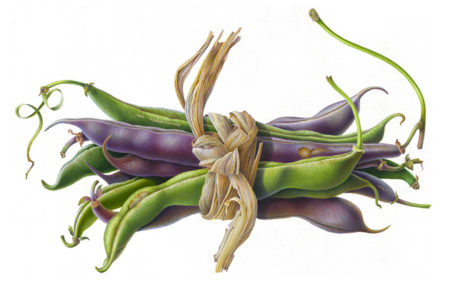
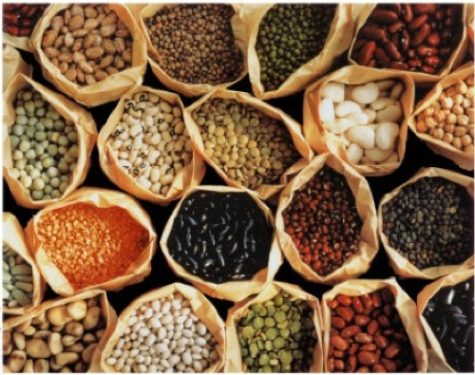
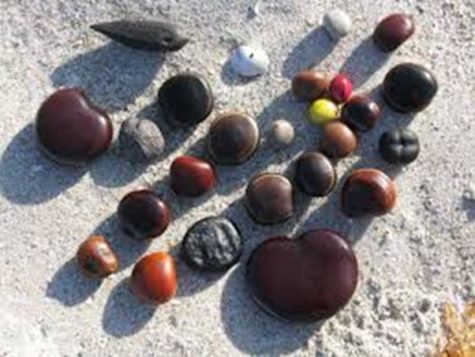
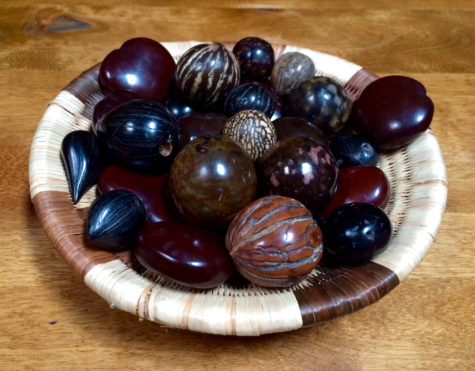
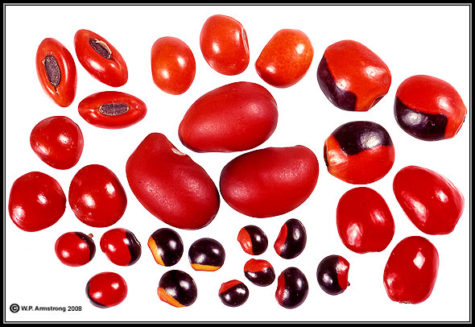
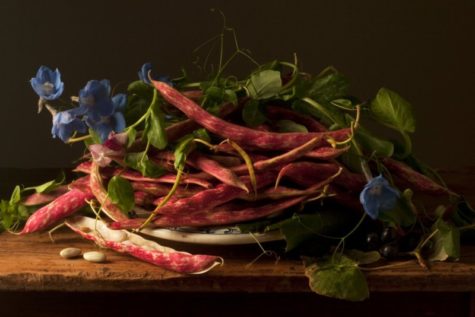
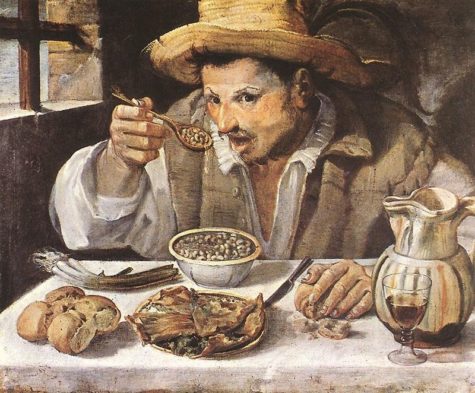

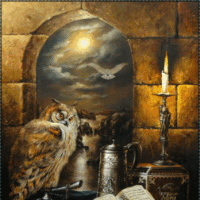
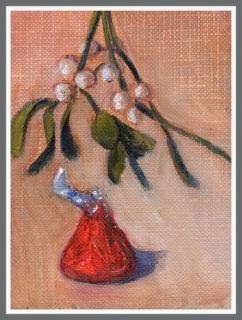
Merry Meet. I loved your article, fascinating! I never knew beans could be so beautiful, and lucky. I wish I could get all the beans in your pictures, Do you sell? Where can one purchase some of the beans? I know we have dried beans in stores, but not like you show. Thank you for the information, Wonderful! Many Blessings
Thank you. Amazon probably has beans of all kinds, including those nifty colorful red ones. Also at the bottom of the article is a link to Beach Beans, a website that sells the sea beans, which are the super cool big black beans.
😁enjoyed this read💝 sincerest thanks💝💝💝
Hi someone gave be a bean pod and said to plant it then call their name . What kind of ritual could this be ?
I, would like to try to grow some of the seeds ,and would lik to know where to get them.
Hi, can I place Great Northern Beans on my altar?